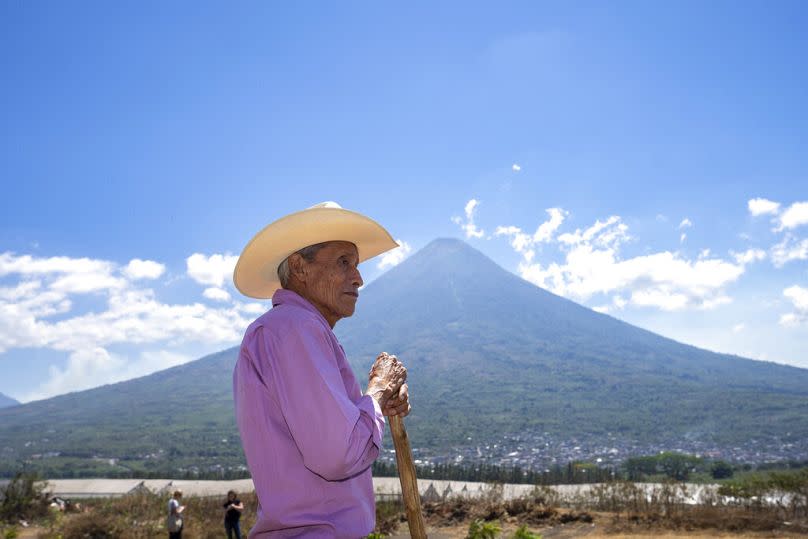Climate finance for adaptation needs a clear destination

How do you know when a small-scale farmer in Africa, Latin America or Asia has sufficiently adapted to longer droughts or shifts in traditional monsoon seasons?
The complexity of this question means it is often left unanswered, with funding for such adaptation in developing countries dropping to around just a quarter of total climate finance provided by developed countries.
Delegates gathering at the Bonn Climate Change Conference to prepare for this year’s UN climate talks will be anticipating such questions, with COP29 already dubbed the “finance COP”.
In Baku, Azerbaijan, later this year, countries are expected to discuss a new climate finance deal after reaching the target of $100 billion (€93.2bn) a year in finance for developing countries two years later than agreed.
Historically low-emitting countries across much of the Global South desperately need more financial support to improve their climate defences across key sectors such as agriculture.
Less than 1% of international climate finance was spent helping smallholder farmers adapt to climate change in 2021, with many forced to spend up to 40% of their own incomes to cope with floods, droughts and crop pests.
However, in addition to more finance, countries across Africa, Asia, and Latin America also need ways of measuring adaptation to direct investments more effectively.
The solution that works already exists
While efforts to transition to sustainable agriculture across Europe have sparked protests among farmers this year, adapting to the evolving impacts of climate change is already a matter of survival for those in the Global South.
One emerging solution is an adaptation index, which scores resilience to climate shocks to highlight where finance for climate adaptation is most needed. Such models can quantify levels of adaptation and preparedness, giving policymakers, development agencies, investors, and donors clear guidance on where and how to invest in adaptation finance.

Adaptation indices, developed at a country or commodity level, complement other work to consolidate climate data and research, such as CGIAR’s Africa Agriculture Adaptation Atlas, which provides interactive data insights and forecasts.
This new methodology is already providing actionable insights to direct adaptation funding and have the best chance of increasing the resilience of some of the world’s most vulnerable communities.
How has 30 years of logging saved the rainforest in Guatemala?
Explore Guatemala’s volcanoes and cloud forests for the adventure of a lifetime
Over the past two years, the first-if-its-kind Adaptation Equivalency Index (AEI) has been developed for Guatemala and Honduras by Heifer International, Conservation International and local partners, supported by the Global Environment Facility. Guatemala and Honduras have both ranked among the top 10 countries most affected by climate change over the past decade, with heavy rains, floods, droughts and hurricanes becoming more frequent and affecting agriculture.
The index ranks the adaptation levels of the countries’ major agricultural commodities: spices, cacao and coffee.
Evidence-based investment means tangible impact
What makes this index novel is that it starts off with the farmers themselves, identifying the real-world climate threats that producers are already experiencing and anticipating, as well as their capacity to adapt.
This work has already uncovered the fact that water scarcity is the most common climate risk for crop farmers in Guatemala and Honduras across the different commodities.
The index ranks the level of climate adaptation to different hazards at intervals between 0 and 1, making clear where the greatest risks to farmers lie. This can then inform government policy and national adaptation strategies, identifying clear opportunities to invest in climate-smart agriculture and regenerative practices.

When it comes to supporting farmers in adapting to water challenges, government and development agencies can invest in nature-based solutions such as increased shade and techniques such as terracing, which helps retain water in the soil by levelling off slopes to prevent runoff.
The result is a stronger, evidence-based investment case and tangible impact for those who cannot otherwise afford sustainable alternatives.
'Sounding the alarm': World likely to temporarily pass 1.5C limit by 2028, UN weather agency warns
It’s the Amazon’s turn to lead on just transition, decriminalisation, and global climate action
The index also enables companies to plan and report on investments and outcomes in adaptation more easily, similar to the way in which companies currently report on carbon emission mitigation strategies.
The approach behind these first two indices can very easily be applied to other countries and other commodities, helping to create a standardised way of measuring adaptation. Development of the index is now being considered for other value chains such as cattle and dairy production as well as new countries.
Helping those most under threat remains key to our climate future
Solutions such as these should be on the agenda at the Bonn Climate Change Conference to help guide the discussions on climate finance.
Climate adaptation in developing countries is fundamental to climate justice. Historically, low emitters often have little choice but to adapt to the already inevitable consequences of climate change.
The least the international community can do is fully and strategically finance climate adaptation to provide the best possible protection against climate hazards and risks.
Mark Chandler is Environment Director at Heifer International, a US-based global nonprofit.
At Euronews, we believe all views matter. Contact us at view@euronews.com to send pitches or submissions and be part of the conversation.


